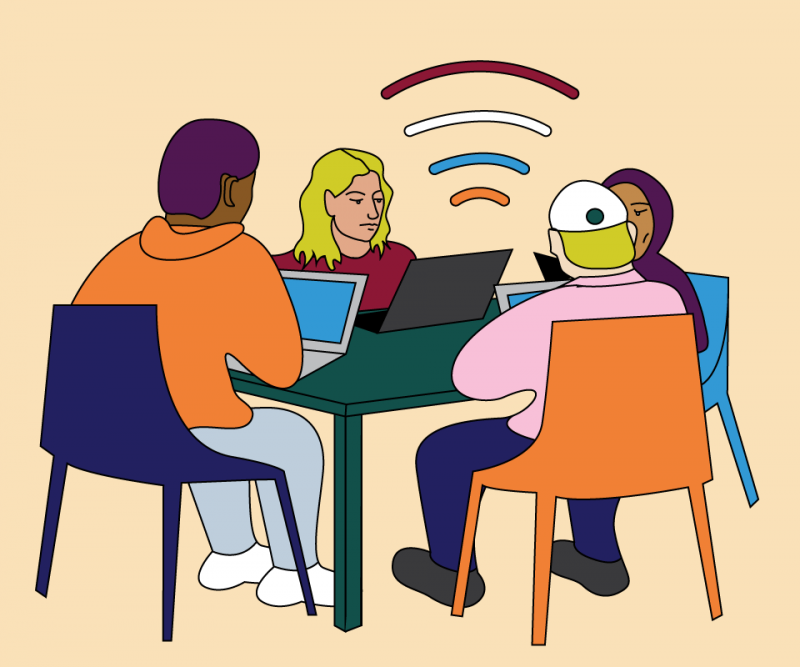New squad took time to develop chemistry but have found success together
Concordia’s new League of Legends Esports team is heading full speed towards the 2019 playoffs.
This is Concordia’s second League of Legends team, or the B team, which currently sits in third place in its division in the Collegiate Starleague (CSL). The team still has the winter semester to qualify for playoffs.
“We can definitely make it to quarter finals at least,” said Charles Morin, the team’s coach. “It all depends on how dedicated we are and how much we play as a team.”
League of Legends is an online role-playing video game in which a very large number of people participate simultaneously. Two teams of five players—who occupy different roles—play against each other until a final objective has been destroyed by one of the teams.
After a summer internship in management at StyroChem, Morin linked his passion for League of Legends to the knowledge he had gained at his internship. Since he didn’t play as much as he used to but still understands the game well, Morin approached the president of the Concordia Esports Association, Dimitri Kontogiannos, to be a coach. He offered Morin that position—a status Morin claims suits his personality.
“I always found myself more of a coach,” Morin said. “Even with my friends, I was like a leader.”
After two weeks of tryouts in September 2018, Morin filled the five spots on the team. Since players usually master one of the five roles, the coach was lucky to find players who practise different positions on the map.
The map is divided into three lanes—top, middle and bottom—that are separated by jungles. Three players occupy the top lane, the middle lane and the jungle respectively, while the two last players fight for the bottom lane.
To be part of the team, players had to meet certain requirements. They needed to be full-time students at Concordia and had to be dedicated to multiple practices during the week, including one game per week.
A key skill players needed was communication rather than raw talent for the game. Just like other team sports, League of Legends is based on a team’s ability to synchronize their movements around the map, and act upon different situations to win.
“At the beginning, it was tough because no one knew each other,” Morin said. Every player came from a different department of the university, but it didn’t stop them from meeting, because they practice from the comfort of their own homes.
“One day I was like ‘guys we’re not doing practice, we’re going to a bar’ and that was the first time we actually met up,” said Morin. “I think that after that day, we became more friends than just a team.” After that, the players quickly built chemistry, which inevitably made them a better team.
As the fall season progressed, the players started practising on their own, taking initiatives without the coach’s intervention. Since coaches can’t talk to their players or watch competitive games live to avoid cheating, players have to put their communication skills into practice to coordinate plays. Thanks to his deep understanding of the game, Scott Dejong quickly became the voice of the team.
“[Dejong] looks in the future of the game and tells us what we’re supposed to do in two minutes, five minutes or ten minutes,” said Luca D’Ambra, the team’s mid lane player. “As long as we follow his calls, we should win the trades with the other teams.”
Dejong also became the centre of the team’s jokes. As a support, his task is to assist one of his teammates, called the attack damage carry (ADC), to put him at an advantage on his counter enemy. However, Dejong showed a better understanding of the game than most of his team, which is ironic considering his job is to support rather than attack the opponents.
“All the stupid things come from the ADC and the support,” said Arthur Tourneyrie, the team’s top lane player. “We just always tease the bot lane because, in terms of rank, our support is much better than our ADC.”
By joining a team, the players found themselves setting personal goals, and improving on aspects they didn’t think needed tweaking.
“When I play alone, I usually don’t communicate,” D’Ambra said. “I hope to increase [my communication skills] way more, like try to get a more macro sense of the game, not just single player skills but more how everyone should be doing on their team, who should be doing what at what time.”
Even though the team wants to qualify for playoffs, the players’ main goal is to have a blast with their friends playing their favourite game.
“It’s just a hobby kind of thing,” Tourneyrie said. “If we make it to playoffs and if we just play to our full potential—at least feel like we’ve done our best—it would be really great.”
Main graphic by Ana Bilokin.




